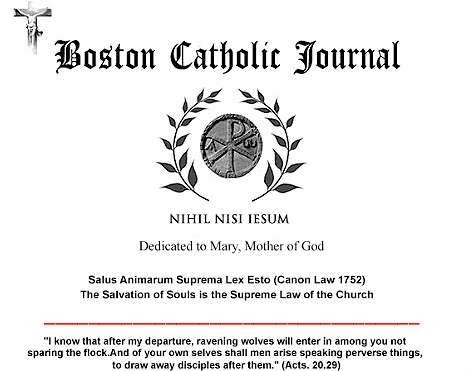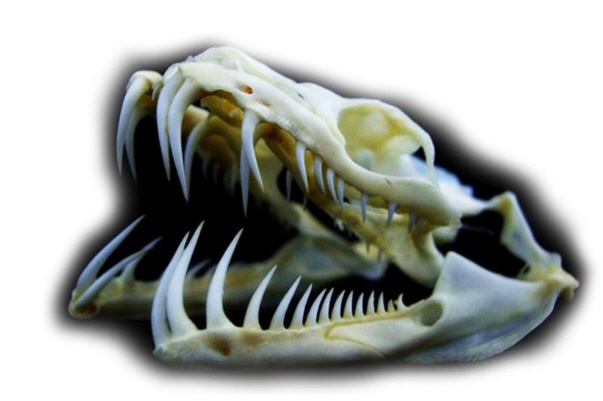
The Deadly Predicament
of Sin

So Easy to Enter — so
Difficult to Escape!
The
image above is perhaps not simply the most graphic, but probably the
most apposite depiction of the predicament of sin.
It is chilling.
Examine it carefully:
the smooth involuted teeth, tapered to infinitely fine and absolutely
unyielding points. Bending in along polished surfaces, the teeth allow
their unwary prey to enter without effort.
But once in, escape — if at all possible — is unimaginably painful:
rending flesh, piercing, scoring, tearing, the teeth leave none unscathed
who are caught within. They scar, maim, and deform for life. Even if
escape is quick, it is only at great cost and immense suffering. Yes,
that image of a Python’s skull is the most appropriate image for
the danger
of sin … that crouches at the door and voraciously awaits us.
We cannot
toy with this demon!
We cannot deceive ourselves
that we are more clever,
stronger, and capable of eluding it.
It is far stronger than we are.
Like all serpents, its
jaws can only be held shut — once clamped down upon, it does not
possess
the strength to open — but once open, it seizes upon us with a ferocity
and force that betrays the innocuous flicker of the slender forked tongue
that intrigues us as it encroaches upon us.
We cannot allow it to. We
must not allow it to!
Our greatest safety lies in distance — and vigilance. Not simply the
sin itself, but as Holy Mother Church teaches, from “The near occasion
of sin”.
The Trap
Perhaps that is why Satan
is depicted as a Serpent in the Garden of Eden:
Sin is
first and foremost a liar. Given that Satan is
“the father of lies and a murderer from the beginning”
1
it is not surprising that
our first parents, Adam and Eve, were first seduced into sin by the
lies of the serpent, by the alluring deception that they could
be like God.
Sin
is always alluring, attractive
Were it not — and could
we clearly see the destructive, fatal, even eternal consequences of
sin — we would panic, and instantly flee it! It is deadly.
Time and again we are warned that
“the wages of sin is death”
2 But let us
be candid: the reality is that we like to toy with sin — to “sin
… just a little”.
However, since its consequence
is death, the obvious question is inescapable: can we be “dead … just
a little”?
Likewise, you are either alive to God (in a state of grace) — or you
are not.
There is no middle ground.
Moral of the story? Next time you are mesmerized by something as remotely
sinuous and intriguing as a snake — it probably is a snake. And
if it appears to be a sin, and your conscience screams at you that it
is a sin — then it unquestionably is a sin.
If you think
that you can contend with the devil himself — giving him just your
little finger, believing that he will not rip off your entire arm
— and your immortal soul — then you are a fool.
RUN!
________________________
1 Saint
John 8.44
2 Romans 6.23
Editor
Boston Catholic Journal
 Printable PDF Version
Printable PDF Version
Comments? Write us:
editor@boston-catholic-journal.com

Totally
Faithful to the Sacred Deposit of Faith entrusted
to the Holy See in Rome
“Scio
opera tua ... quia modicum habes virtutem, et servasti verbum
Meum, nec non negasti Nomen Meum”
“I
know your works ... that you have but little power, and
yet you have kept My word, and have not denied My Name.”
(Apocalypse 3.8)
Copyright © 2004 - 2025 Boston Catholic
Journal. All rights reserved. Unless otherwise stated, permission
is granted by the Boston Catholic Journal for the copying
and distribution of the articles and audio files under the
following conditions: No additions, deletions, or
changes are to be made to the text or audio files in any
way, and the copies may not be sold for a profit. In the
reproduction, in any format of any image, graphic, text,
or audio file, attribution must be given to the Boston Catholic
Journal.
|
|